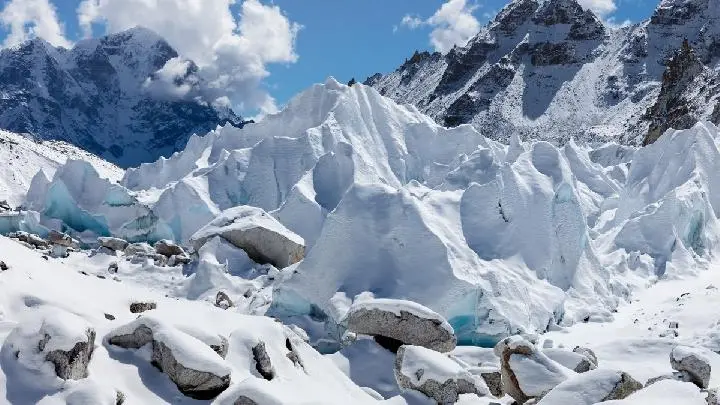
TEMPO.CO, Jakarta - The retreat of the Hektoria glacier in the eastern part of the Antarctic Peninsula in recent years may be recorded as the fastest in modern history. In two months, at the end of 2022, the glacier retreated about eight kilometers, making it the fastest collapse of any land glacier in Antarctica.
A recent study published in Nature Geoscience found that Hektoria's retreat reached its peak in November and December of 2022, at approximately 0.8 kilometers per day. Scientists found that this phenomenon occurred because the flat seabed beneath the glacier caused the ice sheet to float before breaking into large chunks.
The study was led by Naomi Ochwat, a postdoctoral researcher at the Cooperative Institute for Research in Environmental Sciences (CIRES) at the University of Colorado Boulder. "When we flew over Hektoria in early 2024, I couldn’t believe the vastness of the area that had collapsed," said Ochwat as quoted from Earth, Saturday, November 8, 2025.
Ochwat said that if researchers only had one image every three months, the glacier's retreat of 2.5 kilometers in two days might not have been noticed. Satellites recorded an acceleration of ice flow up to six times when the glacier's front became unstable.
Laser measurements of the height showed thinning at a rate of 80 meters per year on its remaining ice layer. The researchers noted that this retreat was not triggered by warmer-than-usual sea temperatures, but rather by the loss of seasonal ice, which usually restrains waves and anchors the ice montes in the area.
A seismic analysis revealed that the glacier's front was still connected to the seabed when it broke. This means that the loss of ice directly increased the volume of seawater, triggering a rise in the sea level.
Ted Scambos, a CIRES senior scientist and one of the study's authors, noted that conditions in Hektoria are prevalent in many Antarctic regions. Some large glaciers are also situated on a flat seabed, potentially causing similar retreats to occur faster than current climate model estimates.
"If the same conditions are set up in some of the other areas, it could greatly speed up sea level rise from the continent," he said.
Researchers are mapping other glaciers in Antarctica that may be located on flat seabeds similar to Hektoria's. By utilizing radar, seismic data, and satellite imagery, they are attempting to identify vulnerable zones, where thinning of just a few meters of ice could cause the glacier to lift off the seabed and collapse.
Experts believe that these findings serve as an important warning for global climate modeling. Most current models treat glacier retreat as a gradual process rather than a sudden event. However, when buoyancy begins to work, the rate of retreat could increase tenfold.
